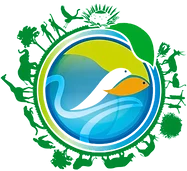
In an effort to empower South African youth and enhance their engagement in biodiversity conservation, the South African Youth Biodiversity Network (SAYBN), in collaboration with the African Wildlife Foundation and the Global Youth Biodiversity Network, is gearing up to launch an innovative social media campaign. Scheduled to kick off on September 28, 2024, this campaign aims to demystify and bridge the knowledge gap surrounding the Kunming-Montreal Global Biodiversity Framework (KM-GBF) and South Africa’s National Biodiversity Strategy and Action Plan (NBSAP).
Understanding the KM-GBF: From Global Goals to Local Action
The KM-GBF, adopted in 2022, sets forth ambitious global targets for biodiversity conservation to be achieved by 2030. Despite its global significance, many young South Africans are unaware of how this framework impacts national conservation efforts. The complex terminology and implementation challenges associated with the KM-GBF have often deterred effective youth engagement and understanding.
Keletso Malape, Chair of SAYBN, highlighted the need to make global biodiversity frameworks like the KM-GBF more accessible and actionable for South African youth. “Our goal is to break down these barriers and empower youth with the knowledge to translate global conservation goals into local action,” Malape emphasized.
Building on Past Success: From Policy to Action
The upcoming campaign builds upon SAYBN’s previous initiative, “From Policy to Action: South African Youth Building Back Biodiversity,” which focused on educating and engaging youth in biodiversity conservation. This time, the focus will be on unpacking the KM-GBF’s goals and aligning them with South Africa’s NBSAP.
Kuhlula Maluleke, SAYBN’s policy lead, emphasized the critical role of local understanding and implementation in the success of the KM-GBF. “Our series will equip South African youth with the tools and knowledge needed to actively participate in biodiversity conservation,” Maluleke explained.
Empowering Youth Through Education and Dialogue
The campaign will feature a series of webinars with biodiversity experts, policymakers, and youth leaders discussing specific targets such as area-based conservation, sustainable use, and climate change mitigation. These sessions will be supplemented with infographics, explainer blogs, and videographics to simplify complex concepts for broader accessibility.
Furthermore, the initiative will culminate in an intergenerational dialogue, providing young people with a platform to directly engage with experts and contribute to future policy recommendations. This dialogue aims to foster innovative solutions grounded in local realities, ensuring that youth voices are integral to shaping national biodiversity policies and actions.
Looking Ahead: Empowering a Generation of Conservation Leaders
Through these efforts, SAYBN and its partners aspire to foster greater awareness, understanding, and active participation in biodiversity conservation among South African youth. By equipping them with knowledge and fostering dialogue, the campaign seeks to empower young people to become leaders in biodiversity conservation, ensuring a sustainable future for generations to come.
Stay tuned for updates on this transformative initiative as SAYBN continues to empower and educate South African youth in biodiversity conservation.
